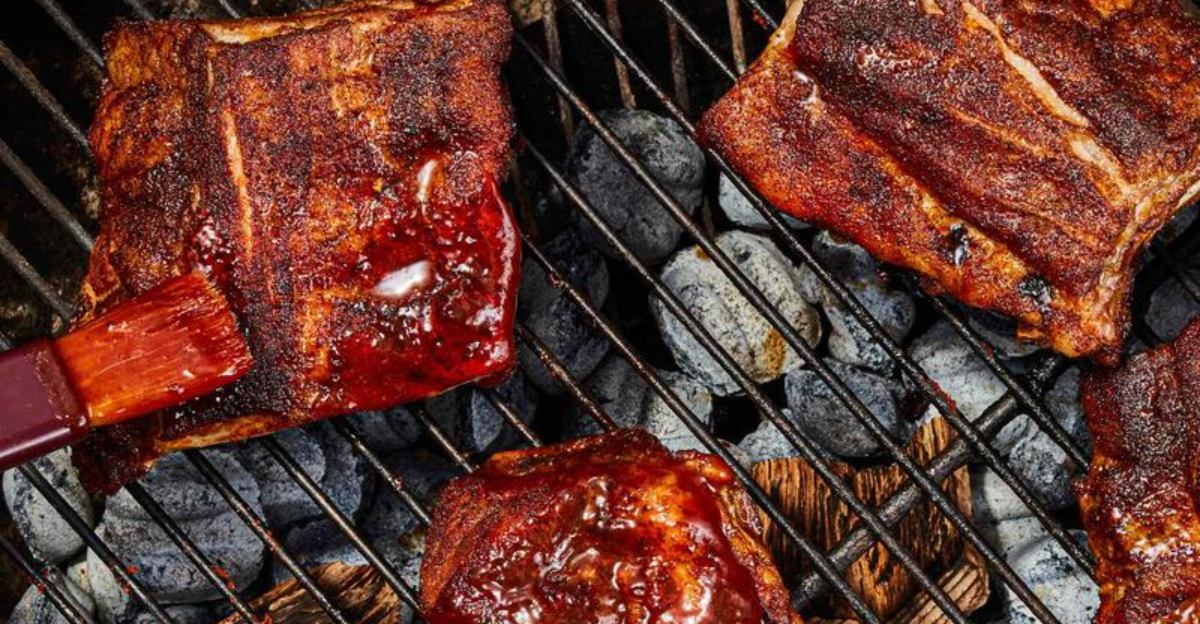The Pros And Cons Of Boiling Ribs Before You Toss Them On The Grill

Barbecue season always ignites the age-old debate: what’s the best way to prepare ribs? Over the years, I’ve tested just about every method out there, but none has sparked more heated opinions than the boil-before-grilling technique.
To some, it’s a foolproof way to achieve fall-off-the-bone tenderness; to others, it’s nothing short of barbecue sacrilege. Boiling ribs before they hit the grill may cut down on cooking time and make them easier to handle, but critics argue it leaches out flavor and ruins the texture.
So, is this method a clever shortcut or a flavor fail? Let’s dive into the pros, cons, and smoky truths behind this controversial rib-cooking strategy.
1. Fat Reduction Benefits
Watching my uncle’s arteries practically clog before my eyes during our family cookouts made me rethink my approach to rib preparation. Boiling ribs releases significant amounts of fat into the water rather than into your body!
During the boiling process, you’ll notice the water surface becoming slick with rendered fat that would otherwise end up in your meal. For health-conscious barbecue lovers, this method offers a way to enjoy ribs with potentially fewer calories and less grease.
My cholesterol-watching friends appreciate this approach, though they still need to exercise portion control. Just remember that you’re also boiling away some flavor compounds along with that fat.
2. Flavor Dilution Problems
Catastrophe struck the first time I boiled my ribs too long! Water is a thief that steals flavor compounds right out of the meat, leaving behind what my brother-in-law called “meat-shaped disappointment.” The boiling process can extract those complex compounds that make ribs so darn delicious.
Many competition pitmasters consider boiling a cardinal sin for this very reason. When those flavor molecules escape into the water, they’re gone forever unless you’re clever enough to use that liquid in your sauce later.
I’ve learned to compensate with aggressive seasoning and glazing afterward, but purists argue nothing replaces those natural meat flavors that low-and-slow cooking preserves. The trade-off might not be worth it for flavor fanatics.
3. Time-Saving Shortcut
My first attempt at making ribs took nearly five hours, and I nearly gnawed my arm off waiting! Boiling can cut your cooking time dramatically, bringing that rack from raw to ready in much less time than traditional low-and-slow methods.
The parcooking process can reduce total cooking time by 1-2 hours, which saved my backside last summer when unexpected guests showed up right as I was firing up the grill. Ribs that might normally take 3-4 hours to become tender can be ready in about 90 minutes total.
For busy weeknight cookouts or when hunger strikes hard, this speedier approach means the difference between enjoying ribs tonight versus settling for hot dogs instead.
4. Guaranteed Tenderness
Grandma’s secret to “fall-off-the-bone” ribs wasn’t her special sauce – it was a 30-minute hot tub for those racks before they hit her old charcoal grill! Boiling breaks down tough connective tissues through moist heat, giving you consistently tender results even if your grilling game isn’t championship-level.
The collagen in the meat transforms into gelatin during the boiling process, creating that melt-in-your-mouth texture many casual rib enthusiasts adore. For beginners especially, this method provides a safety net against the dreaded tough, chewy outcome.
When entertaining guests with varying preferences, I’ve found boiled-then-grilled ribs please the masses who equate tenderness with quality. The predictable results take some pressure off when cooking for a crowd.
5. Texture Transformation Concerns
Heartbreak struck when my competition-judge friend took one bite of my boiled ribs and winced! “Too mushy,” he declared. While tenderness sounds universally appealing, boiling can cross the line into texturally problematic territory.
Authentic barbecue aficionados prefer what they call “competition bite” – where the meat clings to the bone just enough to require a gentle tug but separates cleanly. Boiling often pushes past this ideal texture into what some describe as mushy or mealy territory.
My personal revelation came when I tried side-by-side comparisons. The boiled ribs lacked that magical combination of resistance and yield that makes eating ribs such a primal pleasure. For texture purists, this method might deliver disappointment rather than delight.
6. Grill-Ready Convenience
Last Fourth of July, I became the neighborhood hero by preparing five racks of ribs in advance! Boiling ribs the day before your cookout creates a fantastic make-ahead option that simplifies day-of grilling significantly.
After boiling and cooling, the parcooking allows the ribs to wait patiently in your refrigerator until showtime. When guests arrive, you’ll only need 15-20 minutes on the grill to caramelize your sauce and add that irresistible smoky char.
For entertainers who prefer mingling over monitoring temperatures, this approach transforms ribs from an all-day project into a quick-finish dish. I’ve found this particularly valuable when hosting multi-course cookouts where timing various foods can become a logistical nightmare without some advance preparation.
